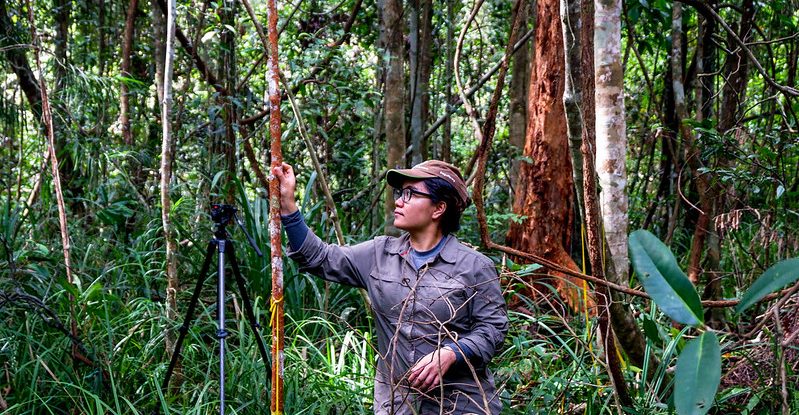
Carbon markets have been variously lauded as a critical part of addressing the climate crisis, and criticized as empty greenwash. Either way, they’re moving some serious cash: the global carbon credit market traded value was almost USD 1 trillion in 2022, and is tipped to reach USD 2.68 trillion by 2028.
They work by allowing individuals, companies, governments, and other organizations to offset some of their greenhouse gas emissions by funding projects that reduce or remove greenhouse gas (GHG) emissions from the atmosphere.
The ethics and implications of doing so are complex. For a start, there are legitimate concerns with purchasers buying credits in place of prioritizing their own emission reductions, leading to accusations of ‘greenwashing’, and hampering any ambition at an urgently needed fast and dramatic drawdown of emissions – after all, the 2030 deadline for Paris Agreement targets is only six years away, and the planet has already warmed more than 1.5 degrees Celsius in 2023.
Meanwhile, many carbon credit programmes’ sequestration claims have not stood up to critique, putting buyers’ green credentials into question: oil and gas giant Shell, for instance, was recently criticized for counting over a million discredited carbon credits towards its climate goals.
At the Center for International Forestry Research and World Agroforestry (CIFOR-ICRAF), we’ve followed carbon markets and projects for years, starting in 2009 with our work on REDD+. Now, we’ve put together a list of principles for engagement in carbon markets, that can help to bring about projects that make positive impacts for people and landscapes – and avoid some of the common pitfalls that have made the media of late.
Principles for engagement with carbon markets and programmes
Integrity: Climate change mitigation in the productive sectors – including energy, transport, housing, manufacturing, agriculture, and more – should be the top priority; carbon credits may be a co-benefit. If so, these shouldn’t represent a “right to pollute” for whoever buys them, but a marginal contribution to offset whatever activities cannot be done with a lower footprint. They should not be used to promote climate claims for companies without ambitious climate responsibility strategies, including those seeking offsets without first demonstrating their efforts to reduce their climate footprint.
Credibility: Carbon credit programmes must use science-based methods and targets and science-backed results. This includes careful continuous monitoring of what is happening to forests and people in a carbon project area – and beyond its borders to make sure any avoided deforestation is not simply shifting elsewhere (the so-called ‘leakage’ of emissions). The tools and data to work this out are widely available: satellite-based forest mapping tools can keep tabs on deforestation at wider scales, and research such as our GCS-REDD+ project (the global comparative study of REDD+) have closely tracked benefit-sharing mechanisms for REDD+ projects.
Centring local communities: People that live within – and rely upon – the ecosystems targeted by carbon credits must be protected from unintended negative outcomes such as deterioration in their livelihoods, voice, or sense of place. Many players don’t take participation and agency of local communities seriously enough, or have learned how to water down rules such as the principles of Free, Prior and Informed Consent (FPIC). Market mechanisms are inherently risky, and investors that are better-equipped to take on such risks should ensure these risks are not passed on to local communities in the selected locations.
Fairness: Any value created in such a project should be shared fairly. This means taking into account the financial viability of a project – at current market rates, carbon for afforestation and reforestation projects only covers a fraction of project establishment and management costs. It also means considering whether such a project will equate to a livelihood increase for project participants. Fairness is not just about the repartition of project costs: it should also take into account the opportunity costs from the change of land management by local communities that is required by the carbon credit, as well as all benefits. It’s also about sharing the benefits fairly within and between the communities involved.
Transparency: In a moving, complex, and exposed context, transparency and sound management of conflicts of interest and ethics are crucial. As the carbon market expands, it is subject to increasingly intensive scrutiny and regulatory demands. As such, carbon projects must be prepared for disclosure and open to critique at all times.
Good governance: It’s critical to get clarity about the ownership of land, trees, and all other assets being invested into; to develop clear policies on decision-making and benefit sharing; to have explicit processes and adequate participatory tools to ensure project participants’ voices are empowered and taken into account every step of the way; and to ensure that Free, Prior and Informed Consent (FPIC) and social and environmental safeguards are in place.
For all their intricacies and challenges, carbon markets are one way – of many – of making the much-needed shift towards valuing critical ecosystem services whose contributions need to be internalized in the real economy. If they’re well-designed, -executed, and -monitored, carbon markets can serve this goal. We already have a whole suite of principles, tools, and approaches underway to preserve and restore ecosystems, whilst improving livelihoods for the people whose lives are anchored within them. We simply need to use them.
We want you to share Forests News content, which is licensed under Creative Commons Attribution-NonCommercial-ShareAlike 4.0 International (CC BY-NC-SA 4.0). This means you are free to redistribute our material for non-commercial purposes. All we ask is that you give Forests News appropriate credit and link to the original Forests News content, indicate if changes were made, and distribute your contributions under the same Creative Commons license. You must notify Forests News if you repost, reprint or reuse our materials by contacting forestsnews@cifor-icraf.org.